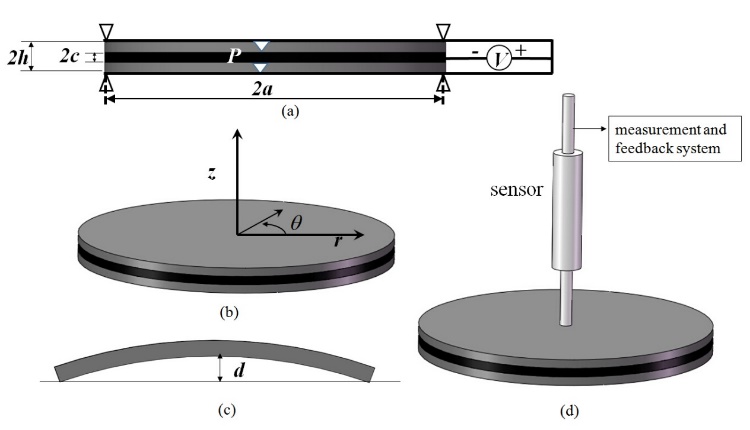In this paper, we propose a model of the thermal effects of the Circular bimorph Piezoelectric Actuator (CBPA).The CBPA, which may be a good match for the large adaptive optics telescopes, has a large stroke and a high resonance frequency (see Fig. 1). The CBPA consists of two identical piezoelectric ceramic layers, which are polarized in the z direction, and one metallic layer in the middle. The total thickness of the CBPA is denoted by 2h, and the thickness of the metallic layer is denoted by 2c. The diameter of the CBPA is denoted by 2a. The top and the bottom electrodes are in parallel and have the same voltage across. The central metallic layer is shared as the third electrode by the upper and lower piezoelectric layers. The CBPA is simply supported at the outer boundary at r=a, where any in-plane displacement is prohibited. When a load voltage V is applied at the CBPA, one piezoelectric layer will be driven to extend and the other layer to contract, which induces the CBPA into a state having flexural deformations. In this deformation status, the distance from a horizontal plane to the center of the circular plate is referred to as the dome height d, shown in Fig. 1(c), which is also the deflection of the plate at r=0. The center of CBPA will be connected to a displacement sensor, and a measurement and feedback system in the future as shown in Figure 1(d). Here, we have derived analytical solutions (both the static solution and the dynamic solution) of the thermal effects of introducing (and increasing the thickness of) a metallic layer into the bimorph. Numerical results are presented to illustrate the dependence of the circular bimorph piezoelectric actuator performance upon the physical parameters. The results of this research have been published by Applied optics.
https://www.osapublishing.org/ao/abstract.cfm?uri=ao-55-4-873

By with WANG Hairen
Fig. 1 A simply supported circular flexural-mode piezoelectric actuator.
